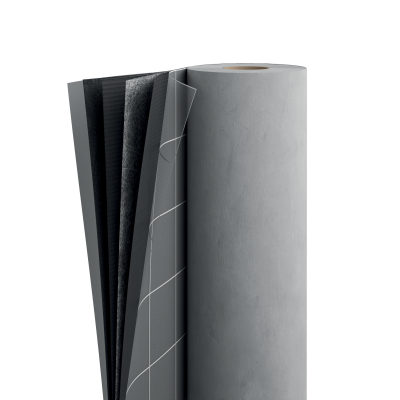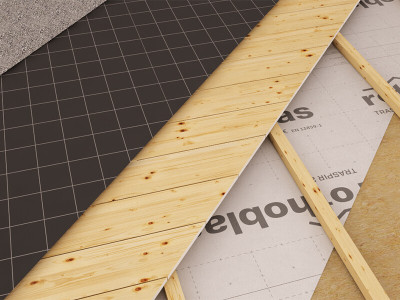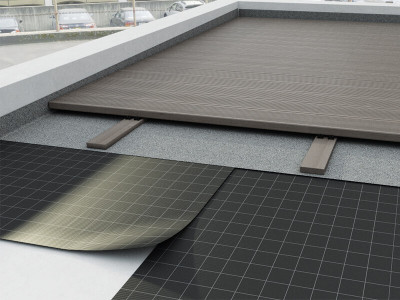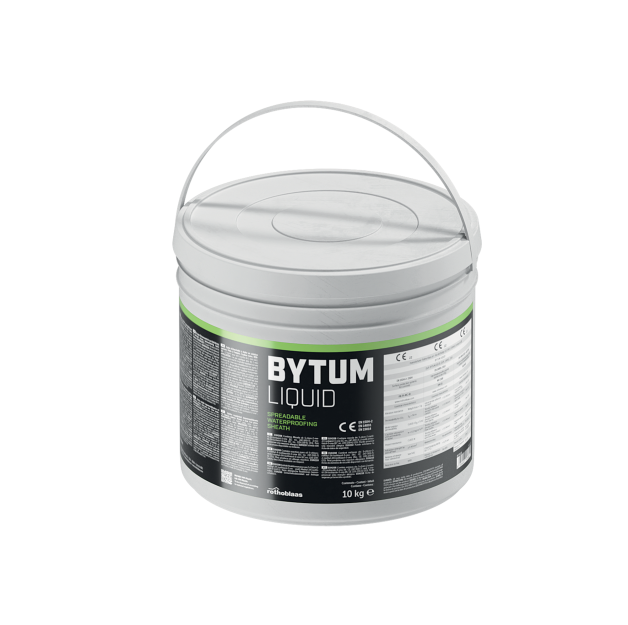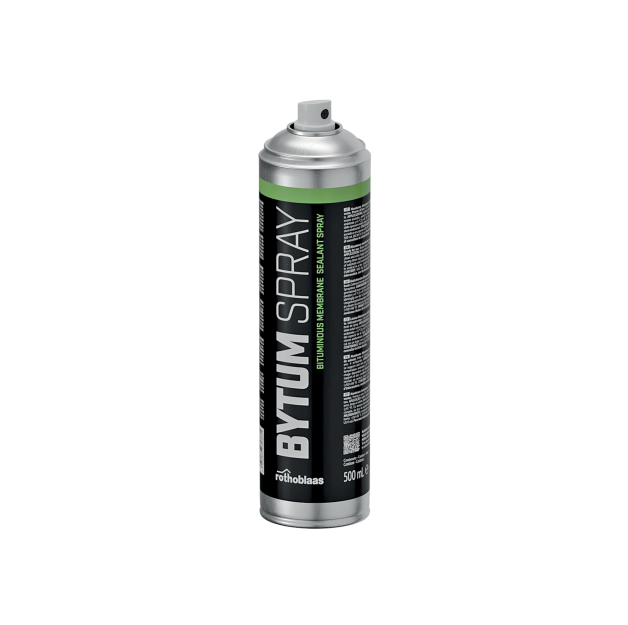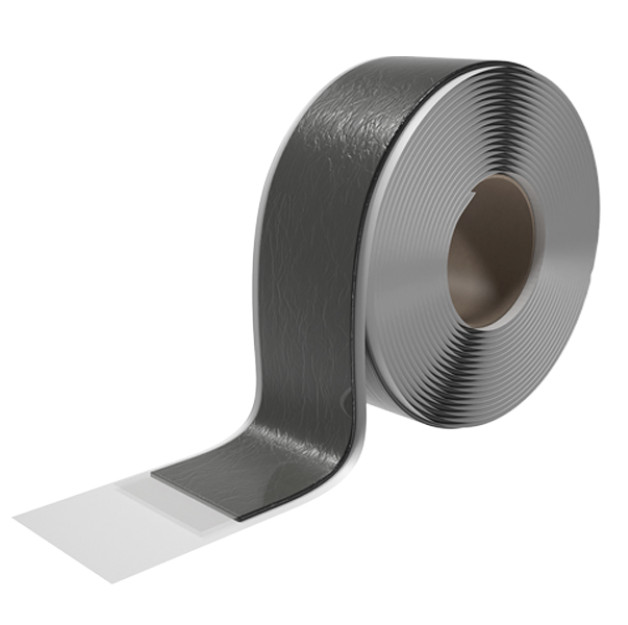BYTUM BASE 2500
The BYTUM BASE 2500 self-adhesive bituminous membrane is the ideal solution on flat roofs in combination with the BYTUM SLATE 3500 slated membrane as the final visible layer. The polymer-modified bituminous compound ensures flexibility and workability even at low temperatures, and allows installation without the use of naked flames or heat.
Description
BYTUM BASE 2500, the self-adhesive bituminous membrane that simplifies installation.
The screen-printed film makes installation extremely easy. The adhesive compound and the polyester surface finish allow perfect self-sealing of the membrane. Used on slopes up to 5° as an underlay, this adhesive bituminous membrane guarantees excellent water tightness.
Documents
-
Technical data sheets
- Technical data sheets Croatian
- Technical data sheets Czech
- Technical data sheets English
- Technical data sheets French
- Technical data sheets German
- Technical data sheets Greek
- Technical data sheets Hungarian
- Technical data sheets Italian
- Technical data sheets Polish
- Technical data sheets Portuguese
- Technical data sheets Romanian
- Technical data sheets Russian
- Technical data sheets Slovene
- Technical data sheets Spanish
-
Recommendations for installation
- Recommendations for installation Chinese
- Recommendations for installation Czech
- Recommendations for installation Dutch
- Recommendations for installation English
- Recommendations for installation French
- Recommendations for installation German
- Recommendations for installation Greek
- Recommendations for installation Hungarian
- Recommendations for installation Italian
- Recommendations for installation Japanese
- Recommendations for installation Korean
- Recommendations for installation Polish
- Recommendations for installation Portuguese
- Recommendations for installation Romanian
- Recommendations for installation Russian
- Recommendations for installation Slovene
- Recommendations for installation Spanish
Technical Data
| Property | Standard | Tested Values | USC Conversion |
|---|---|---|---|
| Mass per unit area | EN 1849-1 | ca. 2650 g/m² | ca. 8.68 oz/ft² |
| Thickness | EN 1849-1 | 2 mm | 79 mil |
| Water vapour transmission (Sd) | EN 1931 | ca. 200 m | ca. 0.017 US perm |
| Tensile strength MD/CD | EN 12311-1 | 400 / 300 N/50mm | 46 / 34 lbf/in |
| Elongation MD/CD | EN 12311-1 | 35 / 35 % | - |
| Resistance to nail tearing MD/CD | EN 12310-1 | 120 / 120 N | 27 / 27 lbf |
| Watertightness | EN 1928 | 60 kPa | - |
| Resistance to temperature | - | -20 / 90 °C | -4 / 194 °F |
| Reaction to fire | EN 13501-1 | class E | - |
| Thermal conductivity (λ) | - | 0,17 W/(m·K) | 0.1 BTU/(h·ft·°F) |
| Specific heat | - | 170 J/(kg·K) | - |
| Density | - | ca. 1250 kg/m³ | - |
| Water vapour resistance factor (μ) | - | ca. 20000 | - |
| Joint strength | EN 12317-2 | 300 / 200 N/50mm | 34.260883 / 22.840589 lb/in |
| After artificial ageing - Tensile strength MD/CD | EN 1297 / EN 12311-1 | 300 / 200 N/50mm | 34 / 23 lb/in |
| After artificial ageing - elongation | EN 1297 / EN 12311-1 | 30 / 30 % | - |
| Flexibility at low temperatures | EN 1109 | - | - |
| Hot sliding | EN 1110 | 90 °C | 194 °F |
| Flexibility at low temperatures | EN 1109 | - | - |
| Storage temperature | - | 10 / 40 °C | 50 / 104 °F |
| Application temperature | - | 10 / 30 °C | 50 / 86 °F |
Composition
| TOP LAYER | PL film |
|---|---|
| compound | elastoplastic polymeric distilled bitumen |
| REINFORCING LAYER | PL stabilised with fibreglass |
| compound | elastoplastic polymeric distilled bitumen |
| Adhesive layer | distilled bitumen modified with self-adhesive polymer |
| RELEASE LINER | removable plastic film |
Specifications
BYTUM BASE 2500
Supply and installation of self-adhesive bituminous membrane, type BYTUM BASE 2500.
Composition
From top layer to bottom layer:
-
PL film;
-
elastoplastic polymeric distilled bitumen;
-
PL stabilised with glass fibre;
-
elastoplastic polymeric distilled bitumen;
-
distilled bitumen modified with self-adhesive polymer;
-
removable plastic film.
Properties
-
Mass per unit area [g/m²]: approx. 2650
-
Thickness [mm]: 2
-
Water vapour transmission (Sd) [m] approx. 200
-
Tensile strength MD/CD [N/50 mm]: 400/300
-
Elongation MD/CD [%]: 35/35
-
Resistance to nail tearing MD/CD [N]: 120/120
-
Watertightness (60 kPa): comply with (EN 1928)
-
Resistance to temperature [°C]: -20/+90
-
Reaction to fire: class E (EN 13501-1)
-
Thermal conductivity (λ) [W/(m·K)]: 0,17
-
Density [kg/m3]: approx. 1250
-
UV stability: 336 h (3 months)
-
Storage temperature [°C]: +10/+ 40
Standards and certifications
-
CE marked in accordance with EN 13707
-
AUS 4200.1 Class 1
Description
The application surface must be dry, free of dust and grease, and not be anti-adhesive. Surface elements must be removed so that the membrane is not damaged during application.
The screen-printed film makes installation extremely easy. The adhesive compound and the polyester surface finish allow perfect self-sealing of the membrane.
Recommended use: The membrane is designed for applications on the exterior side of the roof.
Used on slopes from 5° as an underlay, this adhesive bituminous membrane guarantees excellent water tightness.
Installation:
Unroll the membrane over the surface, progressively remove the release film from the adhesive, and press the membrane firmly to ensure proper adhesion.
Once membrane installation is complete, a pressure roller must be used to ensure perfect adhesion.
In cold climates, the adhesive side of the membrane can be preheated using a hot air gun, such as HOT GUN, to achieve optimal bonding.




